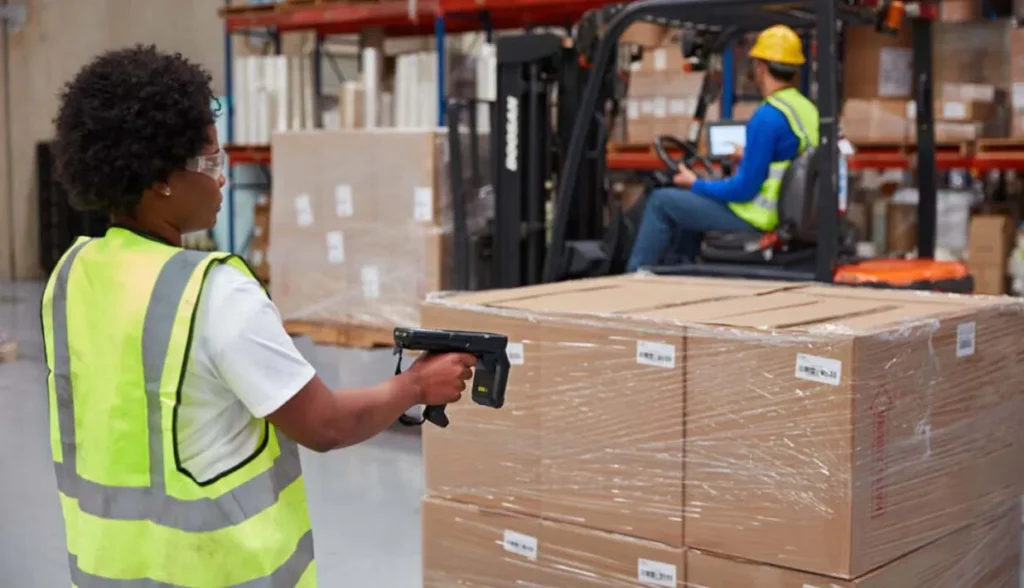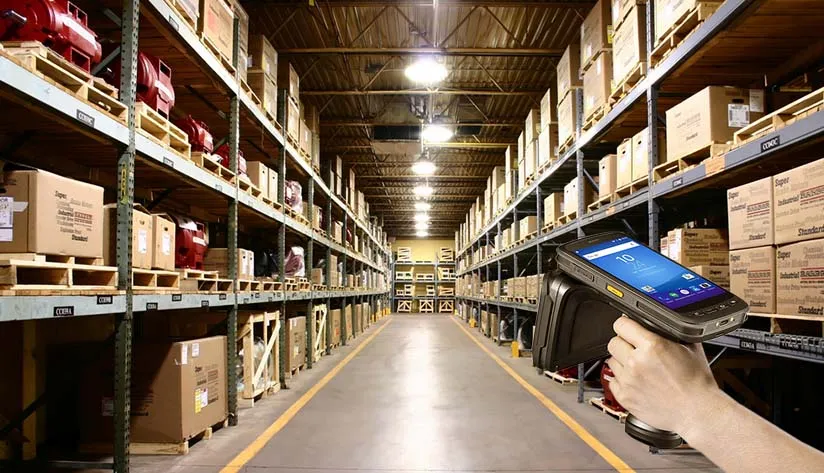This post explores the transformative role of RFID (Radio Frequency Identification) technology in warehouse management, highlighting its key features, such as real-time inventory tracking and automated data collection. It delves into the numerous advantages RFID offers, including increased efficiency, reduced errors, and enhanced inventory accuracy. The article also addresses how RFID improves operational workflows, streamlines processes, and ultimately leads to cost savings, making it a critical asset for warehouses aiming to optimize their supply chain and logistics.
Tag Archives: inventory tracking
This post delves into the significance of Auto-ID technology, specifically focusing on RFID (Radio Frequency Identification) as a cornerstone of modern automation. It highlights RFID’s pivotal features, such as its ability to enhance inventory management and streamline supply chain processes. The advantages of RFID include increased accuracy, real-time data tracking, and improved operational efficiency. Additionally, the article emphasizes RFID’s distinctive qualities, like contactless scanning and the capacity to read multiple tags simultaneously, making it an essential tool in various industries. Overall, the post illustrates how RFID technology is transforming automation, driving innovation, and enhancing productivity in today’s fast-paced environment.
RFID Asset Tracking Systems are innovative technologies that use radio frequency identification to enhance the management and tracking of assets. This post explains how these systems operate, detailing the components such as tags, readers, and software, which work together to capture real-time data on asset location and movement. Key advantages include increased efficiency, reduced labor costs, and improved inventory accuracy, leading to better resource management. The post also highlights distinctive qualities such as the ability to track items in bulk, protection against loss, and the scalability of RFID solutions, making them essential for businesses seeking optimized operations and comprehensive visibility into their assets.
In the post “How to Choose the Right RFID Reader for Efficient Warehouse Management,” readers are guided through the essential criteria for selecting the most suitable RFID (Radio Frequency Identification) reader to enhance warehouse operations. Key features highlighted include reading range, data processing speed, and compatibility with existing systems. The post emphasizes the advantages of improved inventory accuracy, reduced manual labor, and streamlined workflows that come with the right RFID reader. It also discusses distinctive qualities such as durability for harsh environments and user-friendly interfaces, ensuring efficiency and reliability in warehouse management. By making an informed choice, businesses can significantly boost their operational effectiveness and inventory control.
RFID cable tie tags significantly improve equipment management by streamlining tracking and inventory processes. These innovative tags provide real-time data on the location and status of assets, reducing the risk of loss and enhancing operational efficiency. Key advantages include easy installation, durability, and the ability to automate data collection, allowing for accurate and up-to-date asset information. Their distinctive features, such as compatibility with various RFID systems and customizable designs, make them an essential tool for businesses looking to optimize their equipment management strategies.
The blog post “Top 5 Applications of UHF RFID Readers in Logistics and Supply Chain” explores the transformative impact of Ultra High Frequency (UHF) RFID technology in optimizing operations. It highlights five key applications:
1. **Inventory Management**: Enhances accuracy and efficiency in tracking stock levels, reducing errors and labor costs.
2. **Asset Tracking**: Facilitates real-time monitoring of equipment and goods, minimizing loss and improving asset utilization.
3. **Order Fulfillment**: Streamlines the picking and packing processes, leading to faster order processing and enhanced customer satisfaction.
4. **Shipping & Receiving**: Improves the accuracy and speed of shipping and receiving operations, reducing delays and minimizing manual workload.
5. **Cold Chain Monitoring**: Ensures the integrity of temperature-sensitive products, vital for compliance and quality control.
The post underscores the advantages of UHF RFID, such as increased visibility, operational efficiency, and reduced costs, making it an essential tool in modern logistics and supply chain management. The distinctive quality of UHF RFID technology lies in its ability to read multiple tags simultaneously, offering a significant edge over traditional tracking methods.





